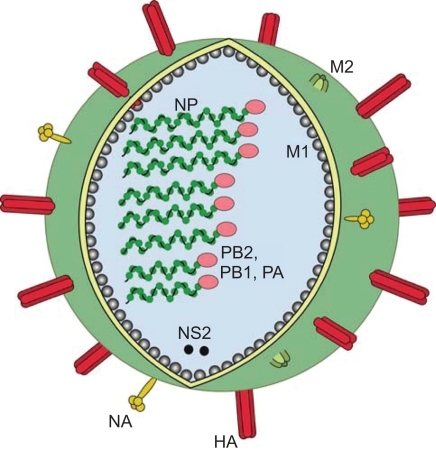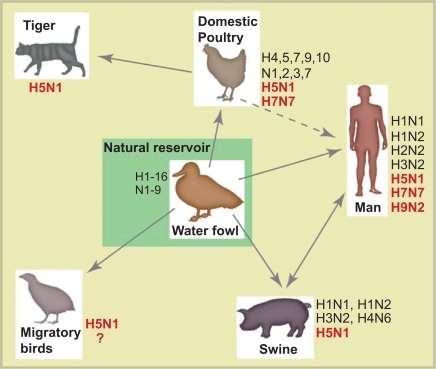Figures & data
Table 1 Influenza A proteins
Figure 1 Schematic figure of influenza virus. On the surface of the virus there are three viral proteins, haemagglutinin (HA), neuraminidase (NA) and the matrix 2 protein (M2). Underlining the viral envelope is the matrix 1 protein (M1), the nucleoprotein (NP) encapsidates the genome segments with one complex of the polymerase attached (PB1, PB2 and PA). The non-structural protein 2 (NS2) is also contained in the virion in low numbers.

Figure 2 A simplified overview of the ecology of influenza A virus. The subtypes that have been detected in each species are shown and the subtypes marked in bold are the highly pathogenic avian influenza subtypes that have caused illness in humans. The main reservoir of influenza A viruses is waterfowl, which may carry highly pathogenic subtypes of influenza without visible illness. The H5N1 has also been detected in domestic cats, however, little is known about their role in H5N1 epidemiology. Currently, we do not have enough knowledge about the importance of migratory birds in the spread of influenza virus (hence the question mark). Interested readers can consult the reviews by Webster et al 1992 or Murphy et al 1996 for further information.

Table 2 Target groups for vaccination (CitationWHO 2005)
Table 3 The efficacy of influenza vaccine in different population groups from representative studies